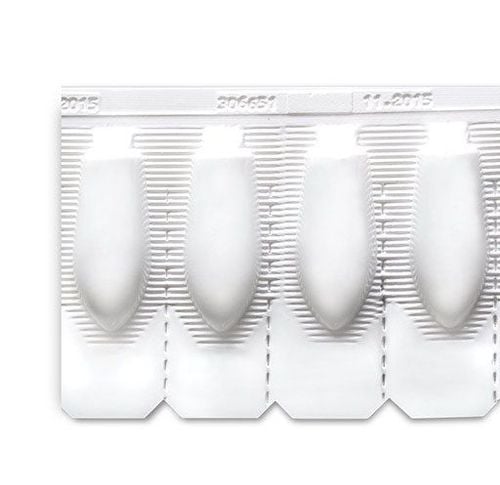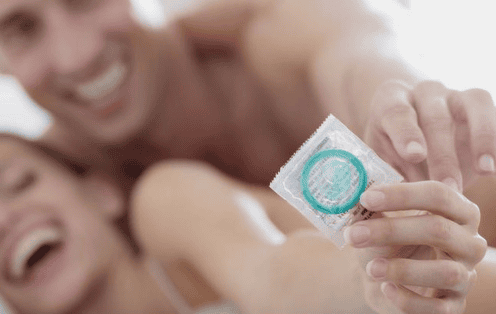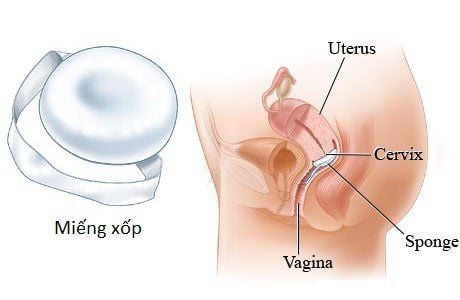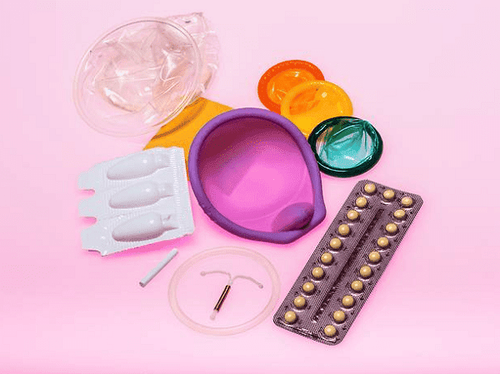This is an automatically translated article.
The article is professionally consulted by Dr., Doctor Ngo Thi Uyen - Obstetrician and Gynecologist - Department of Obstetrics and Gynecology - Vinmec Nha Trang International General HospitalThere are many different methods of contraception, to choose an effective method of contraception requires a combination of many factors. The following article provides information on barrier methods of contraception to help women of reproductive age find an effective, safe and suitable method of contraception.
1. What is a barrier method of contraception?
Barrier contraceptives act as a barrier to prevent a man's sperm from meeting a woman's egg. Some barrier methods of contraception also help protect the user against sexually transmitted diseases. We can buy some methods such as spermicide, condom, contraceptive sponge at most drugstores. Meanwhile, other remedies can only be purchased with a doctor's prescription.
Trắc nghiệm: Bạn đã biết cách tránh thai an toàn chưa?
Có rất nhiều biện pháp tránh thai an toàn nhưng không phải ai cũng biết được điều đó. Trả lời đúng những câu hỏi trắc nghiệm dưới đây chứng tỏ bạn có kiến thức tốt về các biện pháp ngừa thai an toàn.2. Effectiveness of barrier contraception Barrier methods are not as effective at preventing pregnancy as other birth control methods, such as the implant, the injection, or the IUD. In one year of use, about 18-28 out of 100 women become pregnant despite using barrier contraception. If the method you use slips or breaks, or you forget or are unable to use these methods of contraception, you should consider using emergency contraception.
3. Spermicide 3.1. What is spermicide? Spermicide is a chemical that inactivates sperm. Most spermicides in the United States contain a chemical called nonoxynol-9. Spermicide can be used alone or in conjunction with all other barrier methods of contraception except the sponge, because the sponge already contains spermicide. Spermicides come in many forms, including soaps, creams, gels, suppositories, and films.

Thuốc diệt tinh trùng có thể ở dạng viên đặt.
3.2. How to use spermicide When used alone, the spermicide should be inserted into the vagina near the cervix. You need to wait 10 to 15 minutes after placement for the spermicide to be effective. Read product labels carefully to understand how long before you have sex you need to order the medication. Always keep in mind that spermicide is only effective for one hour after it is put in, which means that it has to be reapplied after each sex. Do not douche or attempt to remove the medication for at least 6 hours after insertion.
3.3. What are the benefits, risks, and side effects of using spermicide? Benefits:
Spermicide is easy to use and widely available. Less expensive than other birth control methods. Does not affect women's natural hormones. Spermicide should not affect your milk supply if you are breastfeeding. Risks and side effects:
Spermicides can cause vaginal irritation and burning sensation. Some people are allergic to spermicides. Spermicide containing nonoxynol-9 does not protect against sexually transmitted diseases, including HIV (Human Immunodeficiency Virus), and may increase the risk of HIV from an infected partner if Use several times a day. Spermicide should only be used if you have only one sexual partner and both of you are at low risk for HIV. 4. Condoms 4.1. Types of condoms Condoms are birth control methods that physically prevent sperm from entering the uterus and meeting an egg. There are two types of condoms:
Male condoms are thin membranes made of rubber, polyurethane (plastic) or natural membranes (of animal origin), which are worn on the penis during an erection. sexual relations. Latex, polyurethane (plastic) condoms give you the best protection against sexually transmitted diseases, including HIV. Female condoms are made of soft, thin plastic and are worn inside the vagina to prevent semen from entering the uterus. It is held in place by an inner ring of the cervix and an outer ring of the vagina. It also protects you against some sexually transmitted diseases.

Bao cao su dành cho nam giới được sử dụng rất phổ biến.
4.2. How to use condoms Using condoms with another method, such as spermicide, is the best method of preventing pregnancy and STIs. Condoms should be used with lubricant to prevent tearing or breaking and to reduce irritation. Use only water- or silicone-based lubricants with latex condoms, and do not use male and female condoms together. Throw away condoms after use.
4.3. Benefits, risks and side effects of using condoms Benefits:
Condoms are cheaper than other methods of contraception and widely available. Does not affect women's natural hormones. Can be used immediately after childbirth. They do not affect your milk supply if you are breastfeeding. Condoms and polyurethane resins are the best STI prevention available. Female condoms can be put on 8 hours before sex. Risks and side effects:
Some users are allergic to rubber or polyurethane resin and may have a reaction. 5. Contraceptive sponge 5.1. What is a contraceptive sponge? The contraceptive sponge is a small disk-shaped sponge and contains a spermicide. It is placed in the vagina to cover the cervix and prevent sperm from entering the uterus. Spermicide also inactivates sperm. However, the contraceptive sponge cannot protect you from sexually transmitted diseases, including HIV.
5.2. How to use the contraceptive sponge You can put the sponge on up to 24 hours before sex and should leave it on for at least 6 hours after sex. The sponge should not be left in the vagina for more than 30 hours in total. If you continue to have sex during this time, you do not need to change another sponge. Throw away the sponge after use.
Sponge is less effective for women who have given birth. If you want to use the sponge to prevent pregnancy after having a baby, you should wait 6 weeks after giving birth until the uterus and cervix are back to normal size.
5.3. What are the benefits, risks and side effects of using the contraceptive sponge? Benefits:
Styrofoam is widely sold. Does not affect women's natural hormones. Each sponge contains enough spermicide for repeated sexual activities over a 24-hour period. They do not affect your milk supply if you are breastfeeding. Risks and side effects:
Because the spermicide in the sponge can increase the risk of getting HIV from a sexual partner, you should only use the sponge if you have a single sex partner and both of you are at risk low HIV infection. The use of the sponge can cause burning and irritation of the vagina from the spermicide. Some users are allergic to spermicide or polyurethane or sulfites in the sponge. Toxic shock is rare when using a contraceptive sponge, but it does happen in some cases. Do not use sponges during your period, you have had a baby less than 6 weeks, or you have a history of toxic shock syndrome when using tampons or vaginal sponges. Do not wear the sponge for more than 30 hours.

Miếng xốp tránh thai.
6. Diaphragm 6.1. What is a vaginal diaphragm? The diaphragm is a circular silicone or rubber diaphragm with a soft outer rim that allows passage through the vagina and covers the cervix. It must be used with spermicide. There are two types of diaphragms:
Individual diaphragms, custom-made by experts One-size diaphragms, will fit most but not all women. The diaphragm also doesn't protect you from sexually transmitted diseases, including HIV. You should wait 6 weeks postpartum to use the diaphragm, until the uterus and cervix are back to normal size.
6.2. How to use the diaphragm The diaphragm must stay in place for 6 hours after sex, but not more than 24 hours. If you have sex again during this time, simply apply more spermicide without removing the diaphragm. Then you have to wait another 6 hours before you can remove the diaphragm.
6.3. What are the benefits, risks and side effects of using a diaphragm? Benefits:
Does not affect women's natural endocrine. They do not affect your milk supply if you are breastfeeding. You can put on the diaphragm many hours before sex. To know exactly what time it is, read the diaphragm manual. Risks and side effects :
Spermicide used with a diaphragm can increase the risk of getting HIV from a sexual partner, you should only use a diaphragm if you have only one sex partner and both of you are at low risk for HIV . Using a diaphragm and spermicide can cause burning and irritation of the vagina from the spermicide. Some cases are allergic to insecticides and rubber. Using a diaphragm and spermicide can increase the risk of urinary tract infections. There have been cases of toxic shock caused by the use of the diaphragm. To reduce the risk of toxic shock, do not leave the diaphragm in place for more than 24 hours. 7. Cervical cap 7.1. What is a cervical cap? The cervical cap is a small round plastic cap that fits over the cervix and stays in place thanks to suction. It acts as a barrier that prevents sperm from swimming into the uterus. The cap is recommended to be used with spermicide. The specialist will help you measure and choose the cap size. Caps do not protect against sexually transmitted diseases, including HIV. Caps should be left in place for 6 hours after sex, but not for more than 48 hours in total. If you have sex more than once during this time period, you do not need to reapply the spermicide. The size of the cap will usually be re-selected after you have had a baby or gained weight. Caps are less effective for women who have given birth. You should wait 6 weeks after giving birth to use the cap, until the size of the uterus and cervix return to normal.
7.2. What are the benefits, risks and side effects of using a cervical cap? Benefits:
Does not affect women's natural endocrine. They do not affect your milk supply if you are breastfeeding. You can put the cap on up to 40 hours before sex. Risks and side effects :
Spermicide used with a cap may increase the risk of HIV transmission from a sexual partner, you should only use a cap if you have only one sex partner and both of you are at low risk for HIV . Using a cap may cause vaginal irritation or an unpleasant odor. To avoid the risk of infection and toxic shock syndrome, the cervical cap should not be used during menstruation. If you have unusual symptoms, you should be examined and consulted with a specialist
Please dial HOTLINE for more information or register for an appointment HERE. Download MyVinmec app to make appointments faster and to manage your bookings easily.
Reference source: Acog.org.













